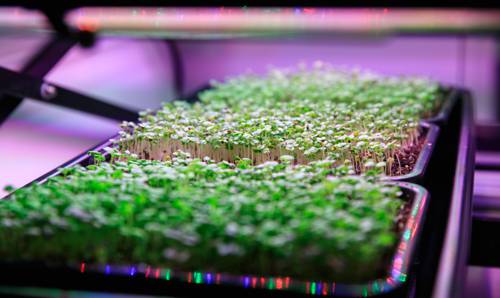
FAQ About Creating Indoor Plant Microgreens Setup

What are microgreens?
Microgreens are young vegetable greens that are approximately 1–3 inches tall. They consist of a variety of edible immature greens, harvested with the stem, seed leaves, and first set of true leaves, all still attached. These small greens are packed with flavor and have a high concentration of nutrients.

What types of plants can be used for microgreens?
Many types of plants can be grown as microgreens, including herbs like basil and cilantro, vegetables like radishes and kale, and grains such as wheatgrass. Each type offers its own unique flavor, color, and texture.

Why grow microgreens indoors?
Growing microgreens indoors offers numerous benefits, such as accessibility to fresh produce year-round, control over growing conditions, and reduced risk of pests. Indoors setups also use minimal space, making it convenient for apartment dwellers or those with limited outdoor space.

What equipment do I need to start growing microgreens indoors?
The basic equipment needed includes shallow trays or containers, growing medium (such as soil or hydroponic mediums), seeds, and a light source. A sunny windowsill or LED grow lights can be used to provide adequate lighting for the microgreens.

How much light do microgreens require?
Microgreens need adequate light to grow properly, typically requiring at least 4-6 hours of direct sunlight or 12-16 hours of artificial light per day. LED grow lights are efficient and widely recommended for indoor setups.

How do I choose the right seeds for microgreens?
Choose seeds specifically labeled as microgreens to ensure better growth characteristics. It's also important to select seeds free from any chemical treatments. Consider varieties that you personally enjoy, as each will have its distinct flavor and nutritional profile.

What is the typical growing time for microgreens?
Microgreens usually take between 7 to 21 days from sowing to harvest. The growing time depends on the type of plant and environmental factors such as temperature and light availability.

How often should I water my microgreens?
Microgreens need consistent moisture but should not be waterlogged. Water them once or twice daily using a spray bottle to ensure even moisture without oversaturating the growing medium.

What growing medium should I use for microgreens?
Common growing mediums for microgreens include soil, coconut coir, or hydroponic pads. Soil is a popular choice for its nutrients, but hydroponic methods are also favored for cleanliness and ease of maintenance.

Can I reuse the growing medium for my next batch of microgreens?
While it is possible to reuse the growing medium, it is generally not recommended due to potential pathogen buildup and nutrient depletion. Using fresh growing medium each time is best to ensure healthy plant growth.

Are microgreens more nutritious than mature vegetables?
Yes, microgreens are often more nutritious than their mature counterparts. They can contain higher concentrations of vitamins and antioxidants, making them a potent choice for boosting nutritional intake with small servings.

How do I harvest indoor microgreens?
Microgreens are typically ready to harvest when they have developed their first true leaves. Use clean scissors to snip the stems just above the soil line, making sure not to cut into the growing medium.

How should harvested microgreens be stored?
Harvested microgreens can be stored in the refrigerator for up to a week. Place them in a plastic container or a resealable bag with a slightly damp paper towel to maintain freshness and moisture.

What are common issues faced when growing microgreens indoors?
Common issues include inadequate light, over-watering, and mold growth due to high humidity. Ensuring adequate air circulation and following best practices for watering can help mitigate these challenges.

Can I grow microgreens without soil?
Yes, microgreens can be grown hydroponically using mediums like coconut coir or hydroponic pads. Hydroponic systems can be cleaner and easier to manage indoors, offering convenience for many growers.

How can I ensure proper air circulation for my indoor microgreens?
Proper air circulation can be ensured by spacing out trays, using fans to circulate air within the room, and not overcrowding the growing area. Good air flow helps prevent the growth of mold and mildew.

How do I prevent mold when growing microgreens indoors?
To prevent mold, maintain proper air circulation, avoid overwatering, and ensure adequate light conditions. Using a fan to keep humidity levels down can also help in reducing mold growth.

What are the best containers for growing microgreens indoors?
Shallow trays or containers, about 1-2 inches deep, are ideal for growing microgreens. They can be purchased specifically for microgreens or reused from plastic food containers with drainage holes added.

How do I know when my microgreens are ready to harvest?
Microgreens are usually ready to harvest once they have grown 1-3 inches tall and have developed their first true leaves. At this stage, they provide optimal flavor and nutrition.

Can I use regular seeds for growing microgreens?
While regular seeds can be used, it's preferable to use seeds specifically labeled for microgreens to ensure optimal growth. These seeds are often untreated and tested to perform well in microgreen conditions.
